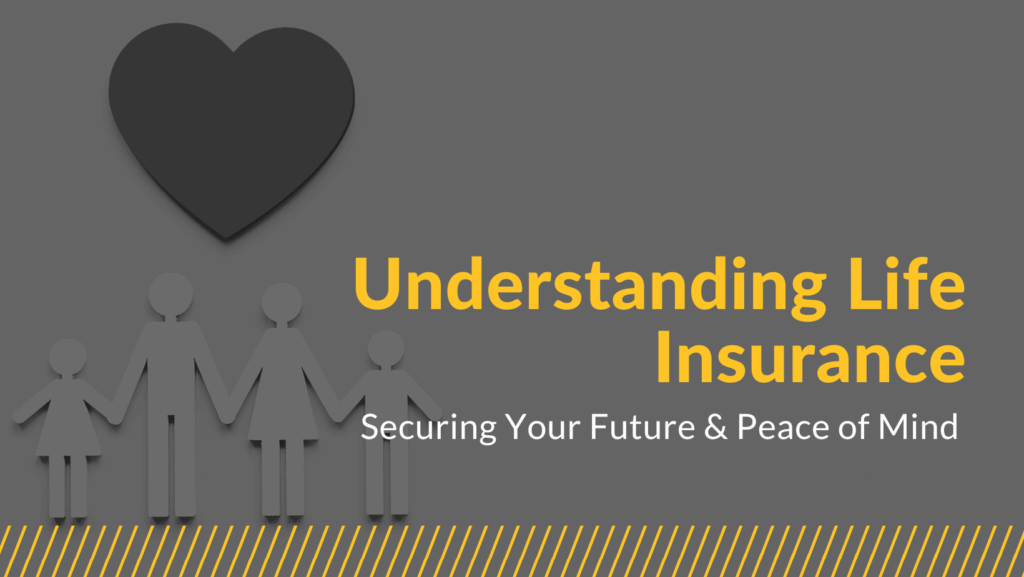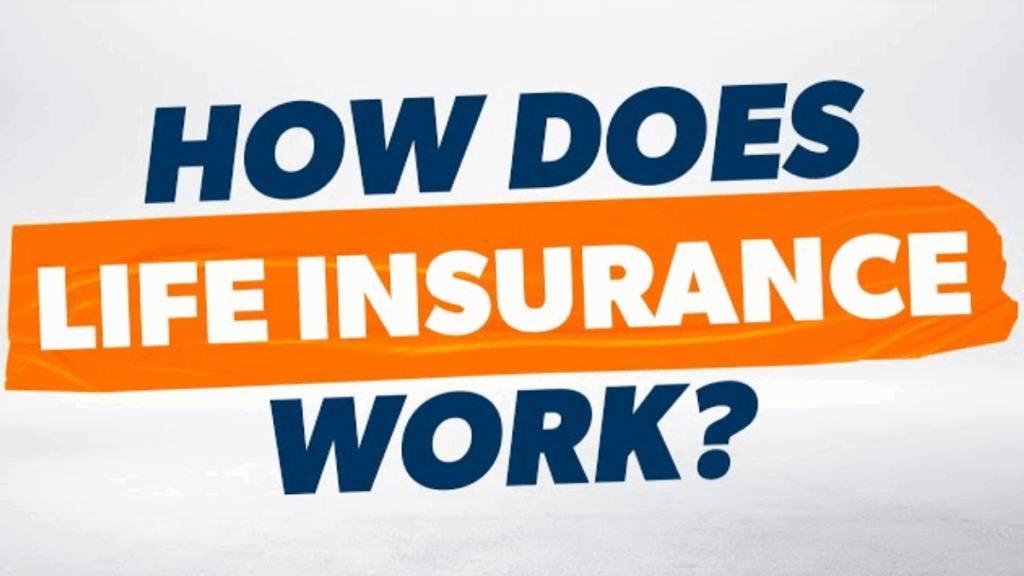Life is unpredictable, and while we cannot control the uncertainties, we can prepare for them. Life insurance is one of the most effective financial tools to ensure that your loved ones are protected in case of unforeseen events. This comprehensive guide will walk you through everything you need to know about life insurance — from its importance and types to tips for choosing the right policy.
Understanding Life Insurance

Life insurance is a contract between a policyholder and an insurance company. In exchange for regular premium payments, the insurer promises to provide a lump-sum payment, called the death benefit, to the beneficiaries upon the insured’s death.
Key Features of Life Insurance
- Financial Protection: Ensures your family is financially secure.
- Customizable Policies: Choose coverage and terms based on your needs.
- Tax Benefits: Premiums and payouts may have tax advantages in many countries.
- Peace of Mind: Provides security knowing your loved ones are cared for.
Why Life Insurance Is Important
Life insurance is not just for the wealthy — it is for anyone with loved ones or dependents.
Protects Your Loved Ones Financially
If you are the primary earner, your income supports your family’s lifestyle, education, and daily expenses. Life insurance replaces that income when you’re gone.
Covers Debts and Liabilities
It prevents your loved ones from inheriting your financial burdens, such as loans, mortgages, or credit card debts.
Supports Long-Term Goals
Some life insurance plans come with investment or savings components, helping you build wealth while ensuring coverage.
Ensures Business Continuity
For business owners, life insurance can fund succession planning and protect against financial loss due to a partner’s death.
Types of Life Insurance
Understanding the different types of life insurance helps you choose what best fits your needs.
1. Term Life Insurance
- Definition: Provides coverage for a fixed period (10, 20, or 30 years).
- Best For: People needing temporary coverage, such as until children are grown.
- Pros: Affordable premiums, simple to understand.
- Cons: No payout if you outlive the term.
2. Whole Life Insurance
- Definition: Offers lifetime coverage with a guaranteed death benefit.
- Best For: Those wanting permanent protection and cash value growth.
- Pros: Builds cash value, fixed premiums.
- Cons: More expensive than term life.
3. Universal Life Insurance
- Definition: Flexible policy combining death benefit and savings.
- Best For: People wanting adjustable coverage and premium payments.
- Pros: Flexible terms, cash value potential.
- Cons: Complexity and higher costs.
4. Variable Life Insurance
- Definition: Permanent coverage where cash value is invested in sub-accounts (like mutual funds).
- Best For: Investors comfortable with market risk.
- Pros: Potential for higher returns.
- Cons: Risk of losing value if investments underperform.
5. Group Life Insurance
- Definition: Coverage offered by employers to employees.
- Best For: Basic, low-cost coverage as part of employee benefits.
- Pros: Often free or low-cost.
- Cons: Limited coverage amount, may end when you leave the job.
How Life Insurance Works

Step 1: Application
You fill out a detailed application form including personal, health, and financial information.
Step 2: Underwriting
The insurance company assesses your risk based on medical history, lifestyle, and occupation.
Step 3: Premium Payments
You pay premiums regularly (monthly, quarterly, or annually).
Step 4: Death Benefit Payout
If you pass away while the policy is active, the insurer pays the benefit to your beneficiaries.
Factors Affecting Life Insurance Premiums
Your life insurance cost depends on several factors:
1. Age
Younger applicants typically pay lower premiums.
2. Health Condition
Existing medical conditions can increase premiums.
3. Lifestyle Habits
Smoking, excessive drinking, or risky hobbies can raise costs.
4. Coverage Amount
Higher coverage means higher premiums.
5. Policy Type
Permanent policies are more expensive than term policies.
How Much Life Insurance Do You Need?
Rule of Thumb
Many experts recommend coverage worth 10–15 times your annual income.
Things to Consider
- Existing debts and mortgages
- Children’s education expenses
- Spouse’s living expenses
- Funeral and medical costs
Benefits of Having Life Insurance
1. Income Replacement
Ensures your family can maintain their standard of living.
2. Debt Protection
Prevents your loved ones from inheriting financial liabilities.
3. Tax Benefits
In many countries, payouts are tax-free and premiums may be deductible.
4. Wealth Transfer
Helps in estate planning and transferring wealth efficiently.
Common Myths About Life Insurance
Myth 1: It’s Only for the Elderly
Reality: The younger you are, the cheaper the premiums.
Myth 2: Only Breadwinners Need It
Reality: Stay-at-home parents also contribute valuable services that would cost to replace.
Myth 3: It’s Too Expensive
Reality: Term life insurance can be very affordable.
Tips for Choosing the Right Life Insurance Policy
1. Assess Your Needs
Consider your debts, income replacement needs, and long-term goals.
2. Compare Multiple Quotes
Shop around to find the best coverage at an affordable price.
3. Check Insurer Reputation
Choose a financially stable company with good customer reviews.
4. Read the Fine Print
Understand exclusions, limitations, and premium payment terms.
Mistakes to Avoid When Buying Life Insurance
- Buying too little coverage
- Not updating your policy after major life events
- Overlooking riders like critical illness cover
- Relying solely on employer-provided insurance
Life Insurance Riders You Should Know
Riders are add-ons to enhance coverage:
Accidental Death Benefit Rider
Provides extra payout if death occurs due to an accident.
Critical Illness Rider
Pays a lump sum if diagnosed with specific illnesses.
Waiver of Premium Rider
Waives premium payments if you become disabled.
Child Term Rider
Provides coverage for your children.
When to Review Your Life Insurance Policy
You should review your policy:
- After marriage or divorce
- After having a child
- When taking a major loan
- On job changes or retirement
The Future of Life Insurance
With technology, life insurance is evolving:
- Digital Applications: Faster approvals
- AI-Based Underwriting: More accurate risk assessments
- Usage-Based Insurance: Personalized premiums based on lifestyle data
Also Read :The Ultimate Guide to Choosing the Best Health Insurance Plan
Conclusion
Life insurance is more than a financial product — it is a promise to protect the ones you love. Whether you choose term, whole, or any other type, the key is to ensure the coverage matches your life stage and financial responsibilities. By planning ahead, you can secure your family’s financial stability and give them peace of mind.
FAQs
1. What is the best age to buy life insurance?
The earlier you buy, the cheaper the premiums. Many experts suggest starting in your 20s or 30s.
2. Can I have multiple life insurance policies?
Yes, you can hold multiple policies from different insurers.
3. Is the payout from life insurance taxable?
In most countries, death benefits are tax-free. However, check local laws.
4. What happens if I miss a premium payment?
Most policies have a grace period. If unpaid beyond that, the policy may lapse.
5. Do I need life insurance if I have no dependents?
It may still be useful for covering debts, funeral expenses, and leaving a legacy.



